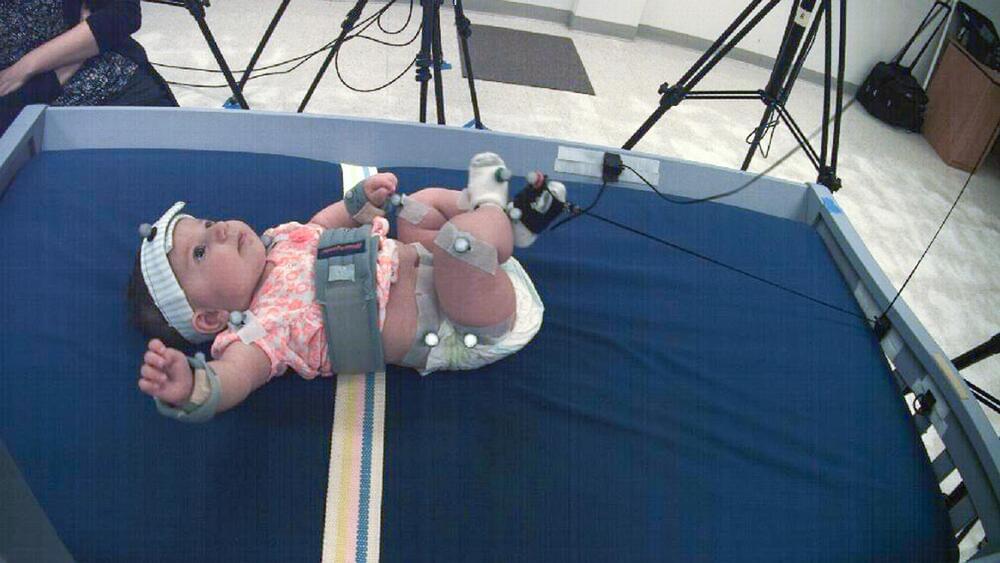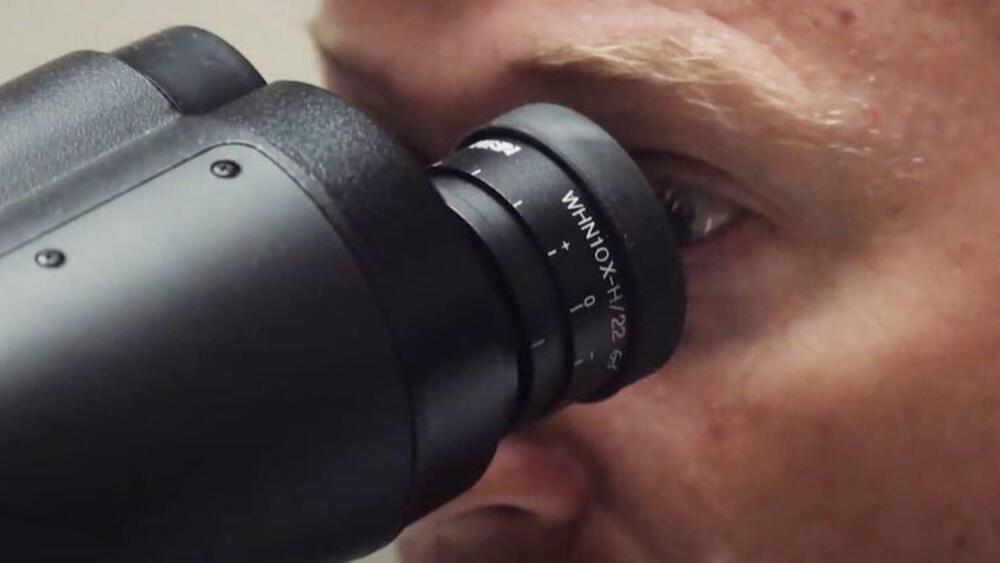Florida Atlantic University.
In psychology, agency is also defined as a person’s capability to act freely and control their actions. However, what’s interesting is that nobody knows how humans develop this sense of agency.

It’s not rocket science, but instead “carbon-neutral” jet-fuel science.
It’s simply a method for pulling carbon pollution and water from the air and using the sun’s energy to turn these into fuel for an airplane.
And there’s a “solar tower” and giant mirrors involved.

The Department of Defense has teamed up with Google to build an AI-powered microscope that can help doctors identify cancer.
The tool is called an Augmented Reality Microscope, and it will usually cost health systems between $90,000 to $100,000.
Experts believe the ARM will help support doctors in smaller labs as they battle with workforce shortages and mounting caseloads.
The pair ran the case through the special microscope, and Zafar was right. In seconds, the AI flagged the exact part of the tumor that Zafar believed was more aggressive. After the machine backed him up, Zafar said his colleague was convinced.
“He had a smile on his face, and he agreed with that,” Zafar told CNBC in an interview. “This is the beauty of this technology, it’s kind of an arbitrator of sorts.”
The AI-powered tool is called an Augmented Reality Microscope, or ARM, and Google and the Department of Defense have been quietly working on it for years. The technology is still in its early days and is not actively being used to help diagnose patients yet, but initial research is promising, and officials say it could prove to be a useful tool for pathologists without easy access to a second opinion.
Antimatter is vastly more dangerous than even nuclear weapons, but warm temperature superconductors may allow it to be weaponized into man-portable machinegu…

Dr. James Tabor is a retired Professor in the Department of Religious Studies at the University of North Carolina in Charlotte where he taught Christian origins and ancient Judaism for thirty-three years, serving as Chair of the Department for a decade. His Ph.D. is from the University of Chicago (1981). He previously taught at the University of Notre Dame and at the College of William and Mary.
Dr. Tabor now devotes himself full-time to research, archaeological field work, and publishing. Over the past three decades he has combined his work on ancient texts with extensive field work in archaeology in Israel and Jordan. Since 2008 he has been co-director, along with Shimon Gibson, of the acclaimed Mt. Zion excavation in Jerusalem and been involved in a half dozen other archaeological projects in the Holy Land over the past thirty years.
Dr. Tabor has worked at several sites in Israel and Jordan including Qumran, site of the Dead Sea Scrolls (1991, 1996), Wadi el-Yabis in Jordan (1992, 1996), Masada (1994), and Sepphoris (1996, 1999, 2000). In 2000 he teamed up with Dr. Shimon Gibson to excavate a newly discovered cave at Suba, west of Jerusalem that dates back to the Iron Age but was used for ritual rites in the early Roman period (2000−2006). Tabor and Gibson were also the principals involved in the discovery a 1st century Jewish burial shroud in a looted tomb at Akeldama. Their latest project is an ongoing excavation in Jerusalem on Mt Zion (Southwestern Hill) just outside Mt Zion Gate along the Turkish city wall (2006−2022).
The future of war is cyberpunk and starship troopers.
Wars in the future may involve vast interplanetary conflicts or civil wars sprawling over an entire world or more, but what will those wars look like?
Start listening with a 30-day Audible trial and your first audiobook is free. Visit http://www.audible.com/isaac or text “isaac” to 500–500.
Visit our Website: http://www.isaacarthur.net.
Join Nebula: https://go.nebula.tv/isaacarthur.
Support us on Patreon: https://www.patreon.com/IsaacArthur.
Support us on Subscribestar: https://www.subscribestar.com/isaac-arthur.
Facebook Group: https://www.facebook.com/groups/1583992725237264/
Reddit: https://www.reddit.com/r/IsaacArthur/
Twitter: https://twitter.com/Isaac_A_Arthur on Twitter and RT our future content.
SFIA Discord Server: https://discord.gg/53GAShE
Listen or Download the audio of this episode from Soundcloud: Episode’s Audio-only version: https://soundcloud.com/isaac-arthur-148927746/planetary-civil-war.
Episode’s Narration-only version: https://soundcloud.com/isaac-arthur-148927746/planetary-civi…tion-only.
Rediculous.
Subscribe for more Artificial Intelligence news, Robot news, Tech news and more.
🦾 Support us NOW so we can create more videos: https://www.youtube.com/channel/UCItylrp-EOkBwsUT7c_Xkxg.
📺 Fun fact: Smart people watch the entire video!
Watch More from Artificial Intelligence News Daily.
🔵 Japan Human Robot News: https://youtube.com/playlist?list=PLi7ozibUCGOubIUsFnw2zatGiNH0MH2FV
🟢 Boston Dynamic News: https://youtube.com/playlist?list=PLi7ozibUCGOvQegVXq-ArQSyDcwXqQqls.
🟠 Robot news: https://youtube.com/playlist?list=PLi7ozibUCGOvWDRGAdGxOZx40pjk82hhd.
🔴 Artificial Intelligence News: https://youtube.com/playlist?list=PLi7ozibUCGOuaUErL6-zIj5_R2E7q_cf4🤖 AI News Daily provides the latest Artificial Intelligence news and trends. Explore industry research and reports from the frontline of AI technology news.🕵️ We take the best research and put our own spin on it, report from the frontline of the industry, as well as feature contributions from companies at the heart of this revolution.
💼 Contact & Copyright Questions.
• For copyright cases, business inquiries or other inquiries please contact us at: [email protected]

New research provides insight about the bedrock scientific principle that mitochondrial DNA -; the distinct genetic code embedded in the organelle that serves as the powerplant of every cell in the body -; is exclusively passed down by the mother.
The study, a collaboration among Oregon Health & Science University and other institutions, published today in the journal Nature Genetics.
Scientists have long recognized the fact that mitochondrial DNA, or mtDNA, comes exclusively from egg cells in humans, meaning only the mother contributes the genetic code carried by thousands of mitochondria necessary for energy production in every cell in the body.

From the oxygen-carrying corpuscles in our blood to the branching neurons that govern our thoughts, our body is built of a dazzling variety of cells.
Researchers from institutions in Germany, Canada, Spain, and the US have published a comprehensive study of how many individual cells of each type there are in typical bodies.
Based on an exhaustive analysis of over 1,500 published sources, most adult males contain a total of around 36 trillion cells, while adult females tend to have some 28 trillion cells. A 10-year-old child, by comparison, would have in the region of 17 trillion.
Now, a YouTuber called Jay Bowles who goes by the name Plasma Channel built one and posted the process on his channel on Saturday. He started his video off by saying he was partially inspired to build the thruster by MIT’s model developed in 2018.
This version of the technology actually made a vehicle fly. “Their design was brilliant,” said Bowles in his video. “And it included aspects of a decades-old device called an ionic lifter.”